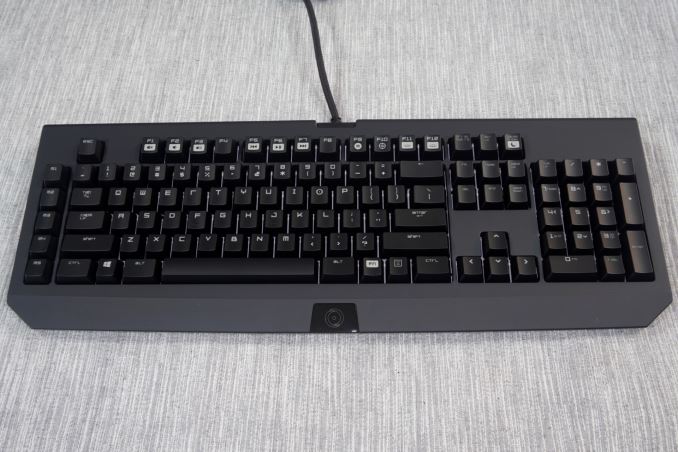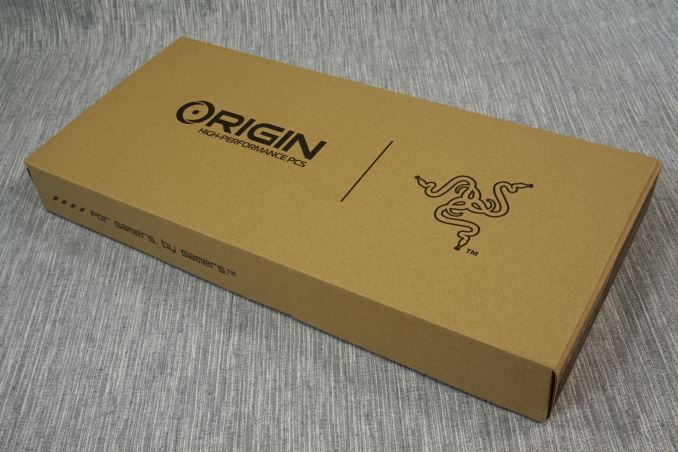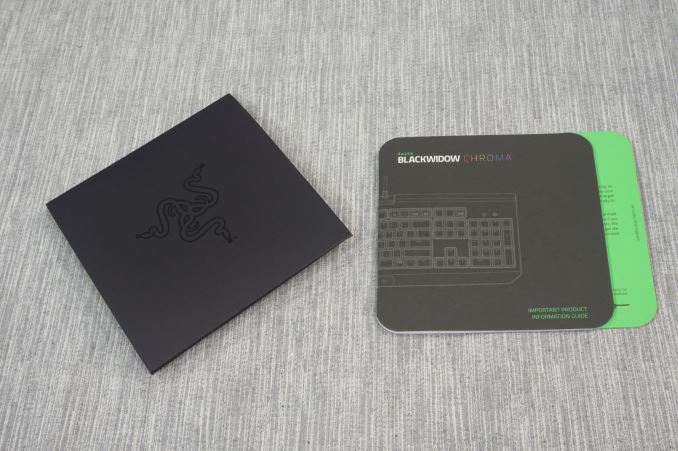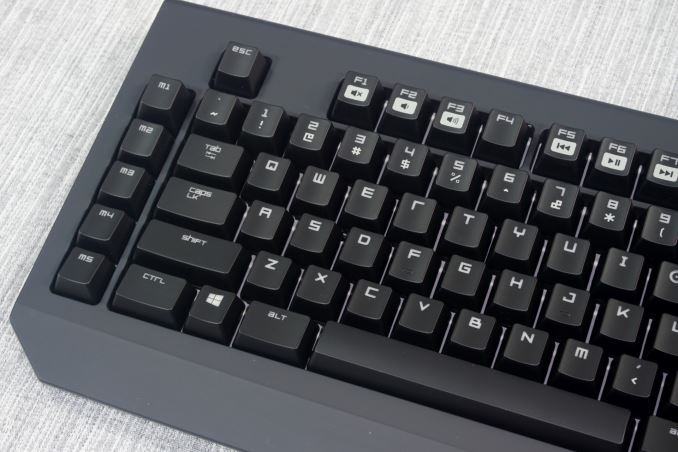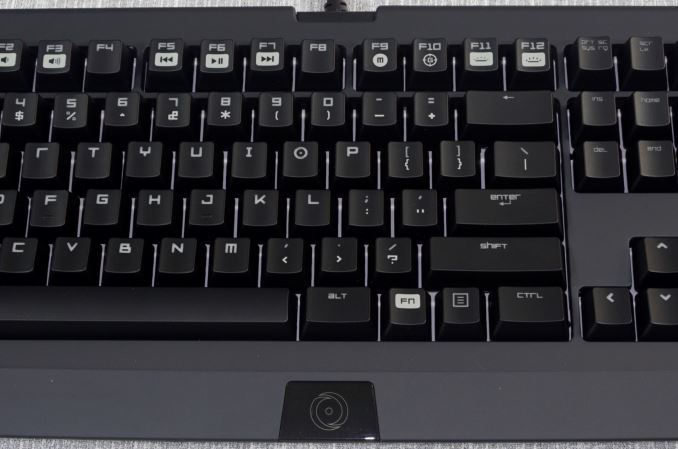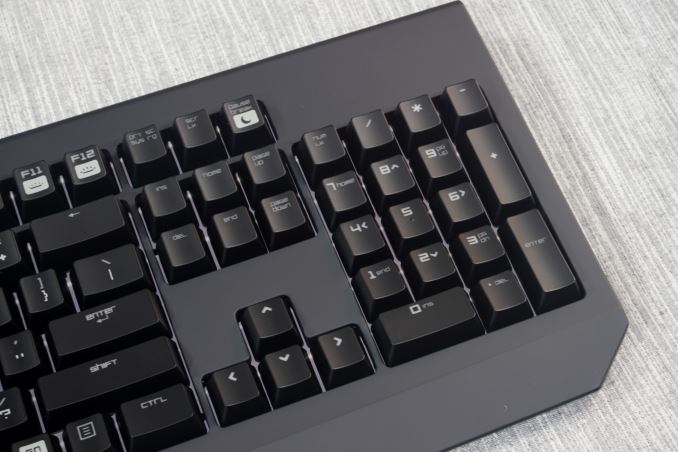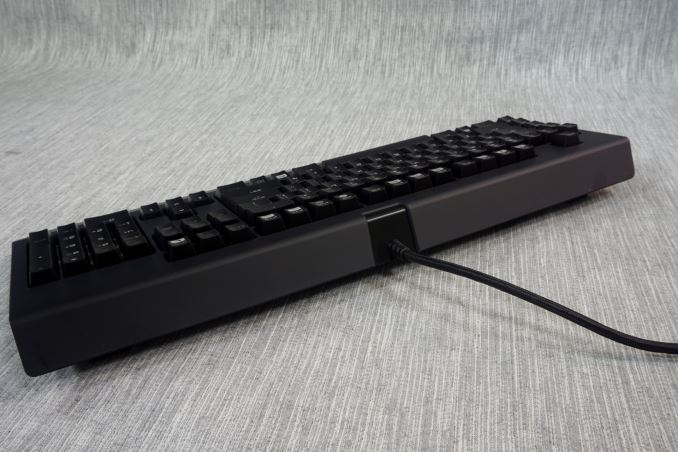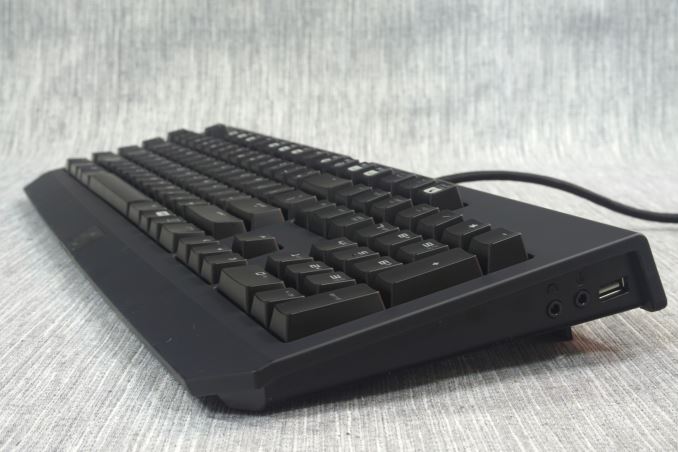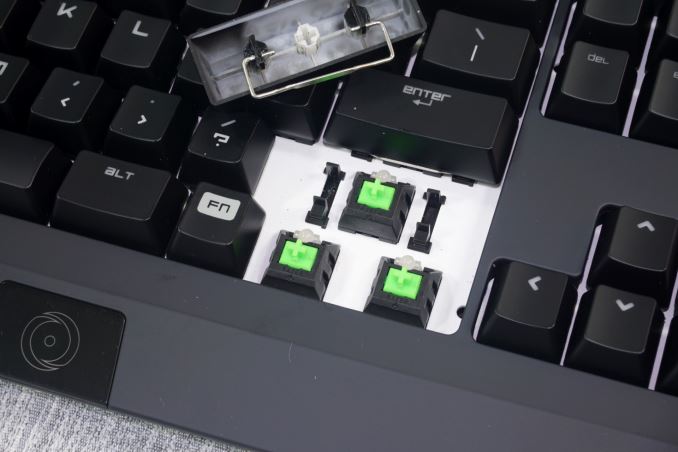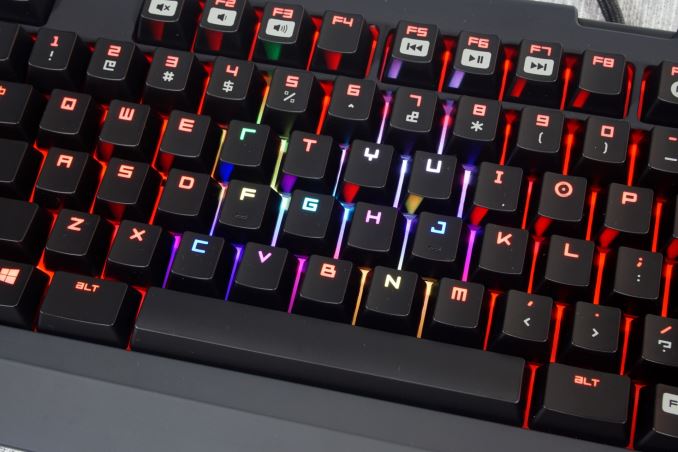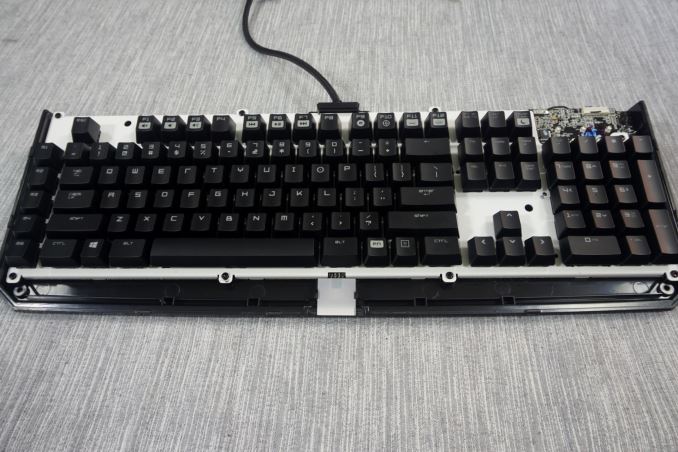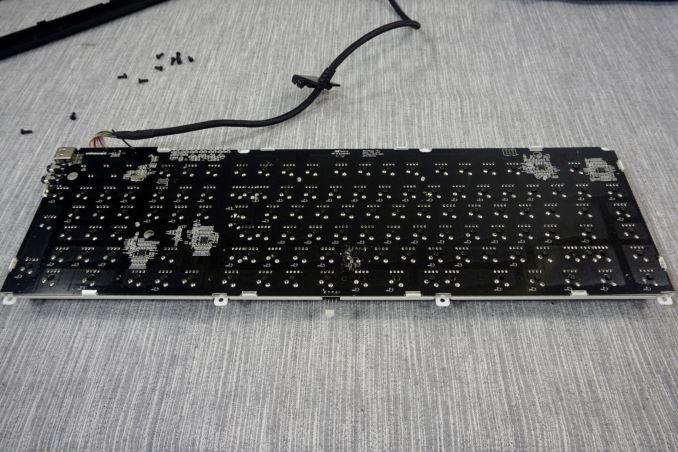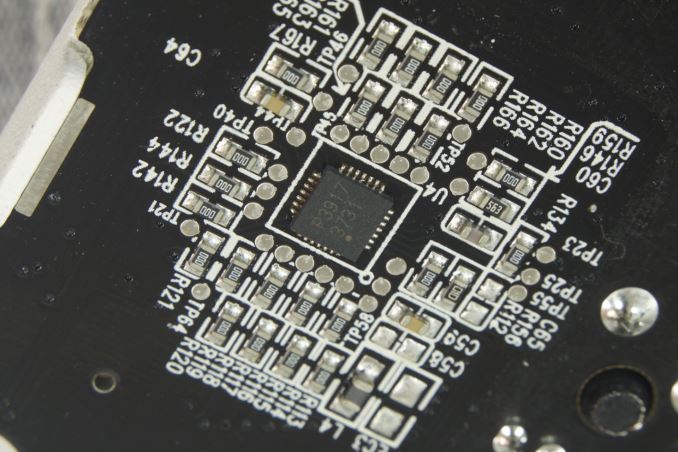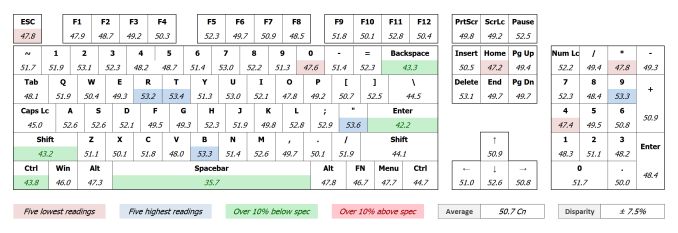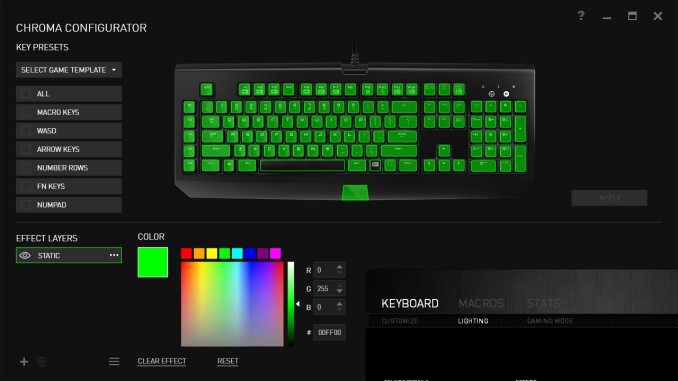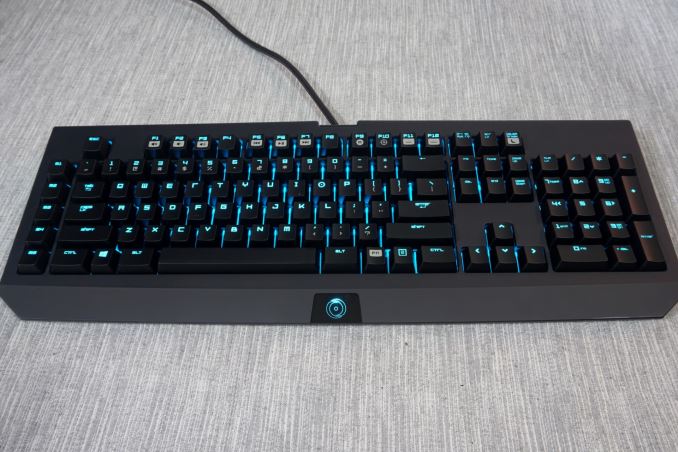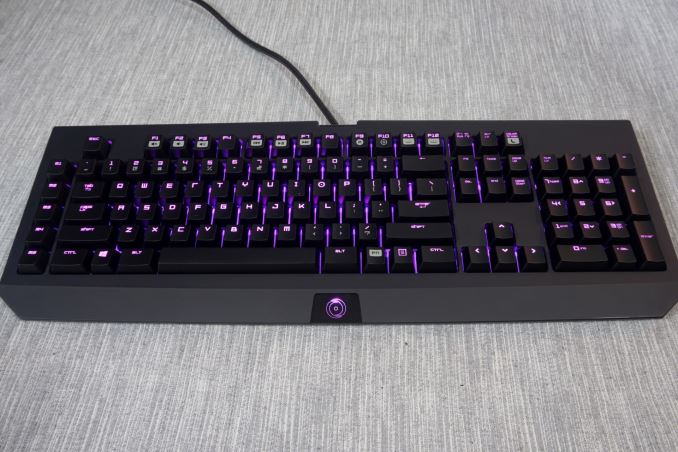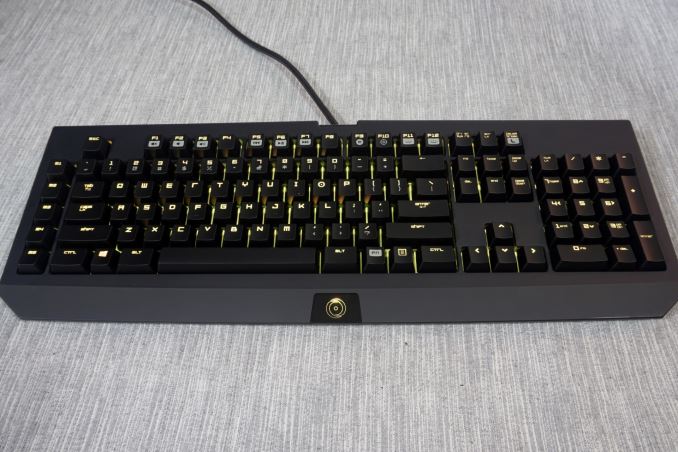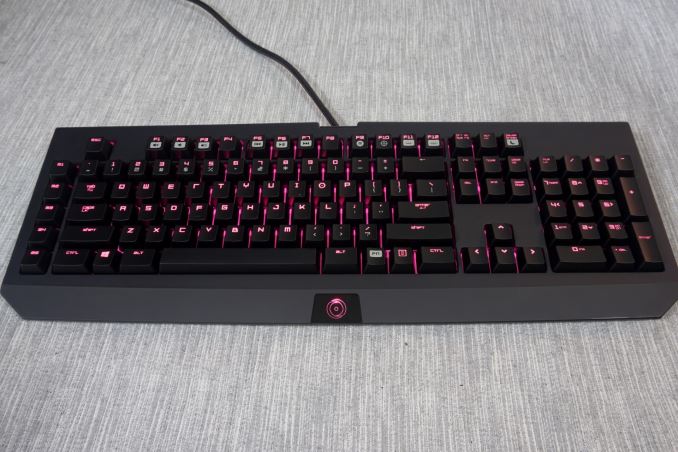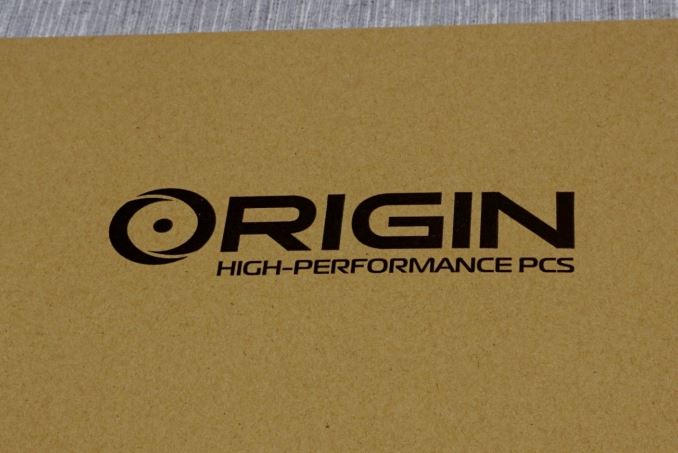
Original Link: https://www.anandtech.com/show/9481/the-origin-pc-blackwidow-chroma-mechanical-keyboard-review
The Origin PC BlackWidow Chroma Mechanical Keyboard Review
by E. Fylladitakis on August 6, 2015 8:00 AM EST- Posted in
- Peripherals
- Keyboard
- Origin PC
- Razer
- Mechanical Keyboards
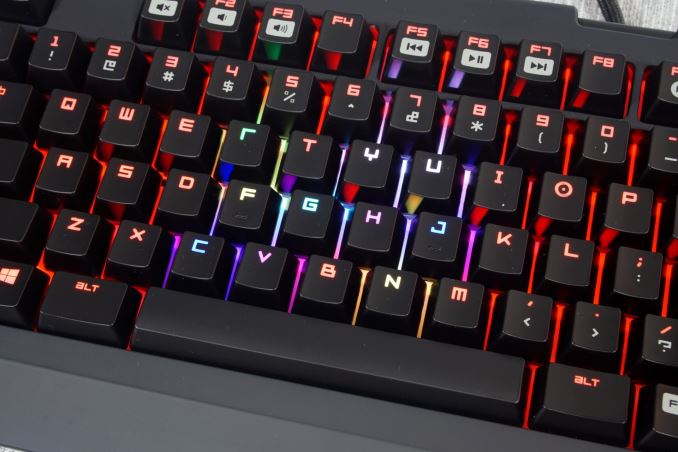
Gamers based in the US and Canada are very likely to have heard of ORIGIN PC. The company, one of the major botique system builders, specializes in building and marketing high-end PC systems, including laptops, workstations, and of course gaming desktops, retailing them along with assorted services such as lifetime support and labor. More recently however, ORIGIN PC decided to diversify their product lineup and branch into selling other items such as peripherals and All-In-One liquid coolers.
The ORIGIN PC BlackWidow Chroma mechanical gaming keyboard is one of the new peripherals that the company recently released, and is what we are looking at in today's capsule review. After reading its name, a well-informed gamer has already realized that this keyboard is an exact copy of Razer’s BlackWidow Chroma. ORIGIN PC is not trying to hide that. On the contrary, Razer is openly named as the company that supplies the switches and the software. Therefore, in every respect, this review can also be regarded as the review of the Razer BlackWidow Chroma.
ORIGIN PC BlackWidow Chroma Mechanical Gaming Keyboard - Key features and specifications
- Razer Mechanical Switches with 50g actuation force
- 60 million keystroke life span
- Chroma backlighting with 16.8 million customizable color options
- Razer Synapse enabled
- 10 key roll-over anti-ghosting
- Fully programmable keys with on-the-fly macro recording
- 5 additional dedicated macro keys
- Gaming mode option
- Audio-out/mic-in jacks
- USB pass-through
- 1000Hz Ultrapolling
- Braided fiber cable
Packaging & Bundle
ORIGIN PC supplies the BlackWidow Chroma in an almost entirely plain, brown cardboard box. The only artwork on the box are the logos of ORIGIN PC and Razer, side by side. Inside the box, we found a minimal bundle offered into a black envelope with Razer’s logo on it, consisting of a quick start guide, warranty information and product registration cards, as well as two large stickers. There is no media with the software, keycap extraction tool, replacement keycaps, wrist rest or any other accessories.
The ORIGIN PC BlackWidow Chroma Mechanical Gaming Keyboard
There are very few physical differences between the ORIGIN PC BlackWidow Chroma and the Razer BlackWidow Ultimate that we reviewed over a year ago. The only discernable difference is the color of the metallic support plate beneath the keys, which has been changed from green to white. Also, the only difference between the ORIGIN PC and the Razer version of the BlackWidow Chroma is the illuminated logo at the front of the keyboard, with each company using their own. Other than the different logo, both keyboards are identical in every respect.
Externally, the BlackWidow Chroma looks like a typical plastic keyboard with five macro keys installed on its left side. The top cover is sprayed with a fingerprint-resistance matte black paint that feels and performs admirably. There is no actual wrist rest and the slightly elongated plastic body of the keyboard does not really help in that fashion. There are no dedicated multimedia or special function keys on the BlackWidow Chroma. Advanced functions can be accessed by holding the FN button pressed and then pressing one of the function keys. For example FN + F11 lowers and FN + F12 increases the intensity of the backlighting respectively.
A USB port and headphone jacks can be found at the right side of the keyboard. With the exception of the thick braided cable exiting the chassis, there is nothing of particular interest on the back side of the BlackWidow Chroma. The thick cable ends to two USB connectors and two 3.5 mm jacks. Only one USB connector is required for the keyboard itself to operate. The second USB connector powers the pass-through USB port and, obviously, the two 3.5 mm jacks are also acting as pass-through connectors for the headphone jacks on the keyboard.
The keycaps are printed with large, futuristic characters. No extra keycaps are provided, with Razer using standard cylindrical keycaps. They appear to be made of transparent or semi-transparent plastic that has been painted afterwards. The smaller keys are very firm and robust, but the large keys wobble a little, even though the required actuation force feels uniform across the length of the key. This is greatly due to the use of stabilizer bars for the large keys, which do even the force but do little to prevent the keys from wobbling.
Beneath the keycaps, we found the Razer Green mechanical switches. Technically, Razer does not make switches of their own and these are products of Kaihua Electronics (also known as Kailh), the logo of which is printed on the keys. We had a thorough examination of Razer’s switches in our review of the BlackWidow Ultimate. For those that do not wish to delve into the details, it would suffice to say that Razer’s Green switches are practically identical to the Blue clicky tactile switch of either Cherry or Kailh.
Unlike the Cherry MX approach that has the body of the switch being transparent to help distributing the lighting evenly around the key, Kailh is using old-fashioned "globe" LEDs at the top center of the switch. As such, the color projection is a lot stronger at the top half of the switch. This is not easily discernable if the entire keyboard is set to one color, but it becomes apparent if multiple colors are in use. In the extreme example of the picture below, the "R" and "Y" keys project their color on the F row while the lighting of adjacent keys is saturating the color on their sides and bottom. The "B" key is red but the lighting around it is partially purple and orange, affected by the adjacent violet and yellow keys. Within the areas that there is a single color for all keys, the lighting is uniform.
The removal of the plastic covers reveals the metallic support plate and the main PCB of the keyboard. We strongly recommend against the removal of the covers by any user, not only there is no reason for anybody but very experienced modders to remove the plastic covers, but also because the top plastic cover is made out of very brittle plastic and that is very easy to break if bent even a slightly bit. The assembly quality of the BlackWidow Chroma appears excellent, with the soldering job much improved since the last time we had a look at a BlackWidow keyboard.
A NXP LCP11U24F 32 bit 50 MHz ARM Cortex M0 microcontroller is the main processor of the BlackWidow Chroma and four P3917 3731 LED microcontrollers are responsible for the LED lighting. While this chip is not lacking the processing power of the chips many competitors are currently using, it has very limited memory, equal to the amounts we are used to seeing in non-programmable (let alone RGB) keyboards. Nevertheless, for Razer to choose this particular microcontroller, it means that it should handle all tasks efficiently.
Quality Testing
In order to test the quality and consistency of a keyboard, we are using a texture analyser that is programmed to measure and display the actuation force of the standard keyboard keys. By measuring the actuation force of every key, the quality and consistency of the keyboard can be quantified. It can also reveal design issues, such as the larger keys being far softer to press than the main keys of the keyboard. The actuation force is measured in Centinewton (Cn). Some companies use another figure, gram-force (gf). The conversion formula is 1 Cn = 1.02 gf (i.e. they are about the same). A high quality keyboard should be as consistent as possible, with an average actuation force as near to the manufacturer's specs as possible and a disparity of less than ±10%. Greater differences are likely to be perceptible by users.
The machine we use for our testing is accurate enough to provide readings with a resolution of 0.1 Cn. For wider keys (e.g. Enter, Space Bar, etc.), the measurement is taking place at the center of the key, right above the switch. Note that large keys generally have a lower actuation force even if the actuation point is at the dead center of the key. This is natural, as the size and weight of the keycap reduces the required actuation force. For this reason, we do display the force required to actuate every key but we only use the results of the typical sized keys for our consistency calculations. Still, very low figures on medium sized keys, such as the Shift and Enter keys reveal design issues and can easily be perceptible by the user.
With a disparity of ± 7.5%, the ORIGIN PC BlackWidow Chroma is not the most consistent keyboard that we have ever tested, but the results are well within the acceptable limits and the differences between the main keys are highly unlikely to be perceptible by the users. The average actuation force is 50.7 Cn, very close to the 50 Cn rating of the switch. Do note that the stiffness of the particular switch slightly increases after the actuation point and more force, up to 60 Cn, is required for the keycap to bottom down. The force required to actuate the larger keys is lower, as the weight and size of the keycap assist with the pressing of the switch. This may not be very perceptible with the medium sized keys, such as the Enter and Shift keys, but it definitely is obvious with the Spacebar key, which feels much softer than any other key on the keyboard.
The Razer Synapse Software
As the ORIGIN PC version of the BlackWidow Chroma is entirely identical to Razer's own product, ORIGIN is also distributing Razer's Synapse software along with the keyboard. Razer's software does recognize the keyboard as the "ORIGIN PC Edition" but, other than the small watermark at the lower left corner of the software, everything else remains identical.
The Razer Synapse is perhaps the only true limitation of the BlackWidow Chroma. Over a year ago, when we reviewed the BlackWidow Ultimate, the software was effective enough for that particular keyboard and showed a lot of promise. However, it would seem that the software did not evolve at all during the past year, while the competition has been working wonders with their own. Furthermore, downloading the software requires that the user sign up for a Razer Synapse account and go through email validation. One cannot simply download the software/drivers, install them and be done with it. Having a server account system does have its benefits, such as the saving of the programmed profiles to the cloud, but many feel that it intrudes their privacy. This has previously received the negative criticism of many users.
With the BlackWidow Chroma being a fully programmable keyboard, the ability to program multiple profiles and the individual programming of each key are required features. The Razer Synapse software does offer these, with the ability to save multiple profiles and either link them to automatically initiate along with the launch of a program or manually switch between them by using keyboard shortcuts. Each key can be reassigned to perform other functions than their standard intended purpose, from simple layout changes and mouse commands to complex macros and external software launches.
However while the Razer software has basic macro usage covered, users looking for more advanced control are going to come away disappointed. The macro recorder is severely outdated and limited, with the ability to record only keyboard keystrokes and delays. These are editable after the recording but only individually and other commands cannot be inserted manually. It cannot record mouse functions at all, let alone absolute on screen coordinates and more complex actions. By all means, this level of macro programming is not going to satisfy most advanced users, who will most definitely resort to third-party software for that.
As this is an RGB keyboard, Razer added functions to accommodate that feature. In its basic form, the user can only select from six full-keyboard effects. More effects can be downloaded and added from the company's website. If the user wishes to program the keyboard manually, the "Chroma configurator" opens a second window that allows for the individual programming of each key or of specified groups of keys. From this window, each and every key can be individually programmed, allowing the creation of custom chromatic layouts and special effects. The only issue is that the software appears to be buggy and the main window always remains on the front layer of the desktop, blocking the Chroma configurator window. And though admittedly a minor complaint, this means that the Razer software realy only works on screens with a resolution of 1680x1050 or higher, as it is otherwise very difficult to operate this particular feature.
Finally, the last tab hosts a recorder of usage statistics. By default, all recording is disabled. If enabled, the users can check how many keystrokes have performed, the travel distance of all these keystrokes, the number of profile switches and macros. The results can be filtered for individual games and time periods. It is not a functionally important feature, but it undoubtedly is fun.
Final Words
As with every keyboard that we review, I used the ORIGIN PC BlackWidow Chroma gaming mechanical keyboard as my personal keyboard for around 10 days to subjectively evaluate its abilities and to better expose its strengths and weaknesses. My typical weekly usage includes a lot of typing (about 100-150 pages), a few hours of gaming and some casual usage, such as internet browsing and messaging. Because typing covers the majority of my typical schedule, the BlackWidow Chroma felt very comfortable and enjoyable to work with. That is largely because of the Razer Green switches, which are practically nearly exact copies of the MX Blue switch, a switch that most people consider ideal for typing. In my personal opinion, I do prefer the MX Brown switch because the clicking noise of the MX Blue switch slightly distracts me. Still, the BlackWidow Chroma feels excellent when typing, especially when typing long texts.
Teal (left) and purple (right) static backlighting
For gaming, the BlackWidow Chroma was fine and very responsive as a keyboard, but the software was entirely inadequate for my needs. Since my current game of choice is an action RPG, I have a few macros that all include mouse movements. The Razer Synapse software cannot include any mouse functions into its macros, so I had to resort to third party software, compile the macros as .exe files and then insert them into the gaming profile of the keyboard as program launches. I also use a lot of macros to insert common text responses for the game, but also code for my professional needs. Although the Razer Synapse software can do that, it was far less complicated and configurable to write these macros with the third party software that I am usually using. Therefore, the actual functionality of the entire Razer Synapse software was reduced to change the backlighting to my favorite color, program two individual profiles and repurpose some keys to execute external programs (that were the macros I compiled with another software). Honestly, Razer can do a lot better with their software if they decide to spend some resources on it.
Yellow(left) and pink (right) static backlighting
As a keyboard, the ORIGIN PC BlackWidow Chroma is fairly well made. Even though it is mostly plastic, the materials are of good quality and the metallic support plate does provide mechanical cohesion where it is required. The matte black cover does repel skin oil and keeps the top free of fingerprints and smear. Beneath the plastics, Kailh's switches and design are adequately good for a high performance keyboard. Certainly, they essentially are copies of Cherry's products, but that does not mean that they are of significantly lower quality. In our experience, Kailh's switches are not as consistent as Cherry's, yet their test results do stay well within the expected quality limits.
There are just two issues with the ORIGIN PC BlackWidow Chroma - the mediocre software and the retail price. We thoroughly explained the limitations of the Razer Synapse software above and we are disappointed to see that the company has done little to evolve their software over the last year, this despite the heavy competition from numerous other companies. These drawbacks could easily be remedied if Razer were to further develop the software, but otherwise the Razer Synapse currently feels inadequate for a top-tier gaming keyboard.
With the current retail price of the ORIGIN PC BlackWidow Chroma, which is at $170 including shipping, we feel that the company will have a very hard time competing. No matter how well made or performing the BlackWidow Chroma may be, it is still a keyboard with a plastic body and switches made by Kailh. The mediocre software does not help much either. Corsair's K70 RGB now retailing for $140 including shipping, Tesoro's similar Lobera Supreme had its price reduced to $110 including shipping, and even the huge K95 RGB sharing the same price tag as the BlackWidow Chroma. Ultimately the BlackWidow Chroma is not a bad product, but given this competition its poorly priced. To that end I suspect a price cut would go a long way towards addressing the market and putting the keyboard on much better competitive footing.

